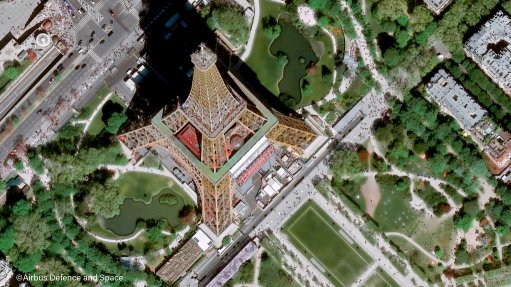Creating intelligence in oil and gas
This article has been supplied as a media statement and is not written by Creamer Media. It may be available only for a limited time on this website.
By Hennie Colyn, Direct Sales Executive: Process Automation at Schneider Electric
The oil and gas industry plays a major role in the global economy and has in recent years come under increasing pressure to meet sustainability targets while still maintaining high levels of operations and lowering the end-to-end lifecycle costs of its assets.
It’s a tall order which has seen owners, operators and engineers looking at strategies that will realise the above. Fortunately, thanks to advances in connectivity and digital analytics, companies can move towards a posture that allows them to enter the next phase of advanced organisational and process management in tandem with sustainability goals.
Traditionally, oil and gas processes were designed and operated independently across a plant’s lifecycle. However, it had in recent years become apparent that managing processes holistically can offer dramatic resiliency and efficiency that operations and decision making.
Generally, processes have for example been operating in silos due to technical hurdles that separate various engineering domains. Digitisation can remove these barriers, ensuring that processes work in an integrated and optimised manner.
Drilling down
To realise the above advantages, it’s important that we take one step back. The oil and gas industry generally features old infrastructure, managing large data sets of data (both structured and unstructured) which is generated from well production, refining, commodity transport, scheduling, logistics and so forth.
Technology allows organisations to collect, process and distribute this data. It can then be used for simulation of reservoir models and visualisation of results, input on drilling locations well operations and wells and how to optimise refinery settings.
But to reap the above benefits, oil and gas companies must link OT (operational technology) to IT control centres and to other facilities, which may be located across the globe. In these environments the connected systems and IT control centres must be available and resilient to ensure the consistent and continuous flow of data.
And this brings us to the next challenge. Oil and gas facilities are often located in inhospitable and remote settings with limited connectivity such as deserts or offshore platforms.
Moreover, these offshore operations produce huge amount of data - an offshore platform, for instance, can produce more than a terabyte of data a day, and may not be linked by cabling to IT facilities on land. This means a terabyte of information would have to be relayed via a remote processing centre or satellite; this is a costly exercise and can result in delays that directly impact vital decision making.
Oil and gas on the edge
The solution is to place datacentres and infrastructure (as a whole) as close as possible to the edge of the network which will yield predictable, future-proofed performance.
Edge computing needs be always-on and available which then requires backup plans such as
power backup (like UPS and generator equipment), especially in situations where power is
generated on-site, as is the case for offshore platforms.
As mentioned, IT systems also need to be harmonised. An integrated IT architecture can enable information and control loops between system edge applications and centralised analytics and services.
Also, field devices such as circuit breakers, meters, variable speed drives (VSD) and process instrumentation embedded with sensors are able to gather data and link to central repositories of data where analytics engines can enable higher-level control and more accurate and timely decision-making.
Technology support for critical applications begins by ensuring that the required IT capability is available and resilient. Edge computing and reliable power can be critical to accomplishing these goals.
Improved IT performance enables the optimisation of the data generated by oil and gas facility infrastructure which can then be leveraged to improve production and asset performance.
Lastly, there is no doubt that streamlining oil and gas’ processes to allow for visible, reliable and accessible operations does have a number of obstacles to overcome. However, by using vendor-neutral solutions to consolidate the data that comes from equipment, manufacturing by various vendors, half the battle might already be won.
Schneider Electric’s EcoStruxure Advanced Automation is a cloud-based IIoT environment that supports organisations’ digitisation transformation. It provides access to data across complex, multi-vendor systems in one environment while enabling oil and gas organisations to extract value, build advanced analytics and speed up IIoT deployment across multiple sites.
Comments
Press Office
Announcements
What's On
Subscribe to improve your user experience...
Option 1 (equivalent of R125 a month):
Receive a weekly copy of Creamer Media's Engineering News & Mining Weekly magazine
(print copy for those in South Africa and e-magazine for those outside of South Africa)
Receive daily email newsletters
Access to full search results
Access archive of magazine back copies
Access to Projects in Progress
Access to ONE Research Report of your choice in PDF format
Option 2 (equivalent of R375 a month):
All benefits from Option 1
PLUS
Access to Creamer Media's Research Channel Africa for ALL Research Reports, in PDF format, on various industrial and mining sectors
including Electricity; Water; Energy Transition; Hydrogen; Roads, Rail and Ports; Coal; Gold; Platinum; Battery Metals; etc.
Already a subscriber?
Forgotten your password?
Receive weekly copy of Creamer Media's Engineering News & Mining Weekly magazine (print copy for those in South Africa and e-magazine for those outside of South Africa)
➕
Recieve daily email newsletters
➕
Access to full search results
➕
Access archive of magazine back copies
➕
Access to Projects in Progress
➕
Access to ONE Research Report of your choice in PDF format
RESEARCH CHANNEL AFRICA
R4500 (equivalent of R375 a month)
SUBSCRIBEAll benefits from Option 1
➕
Access to Creamer Media's Research Channel Africa for ALL Research Reports on various industrial and mining sectors, in PDF format, including on:
Electricity
➕
Water
➕
Energy Transition
➕
Hydrogen
➕
Roads, Rail and Ports
➕
Coal
➕
Gold
➕
Platinum
➕
Battery Metals
➕
etc.
Receive all benefits from Option 1 or Option 2 delivered to numerous people at your company
➕
Multiple User names and Passwords for simultaneous log-ins
➕
Intranet integration access to all in your organisation


















